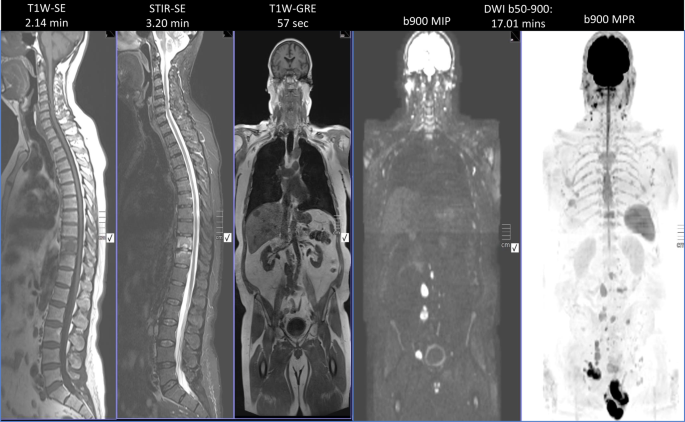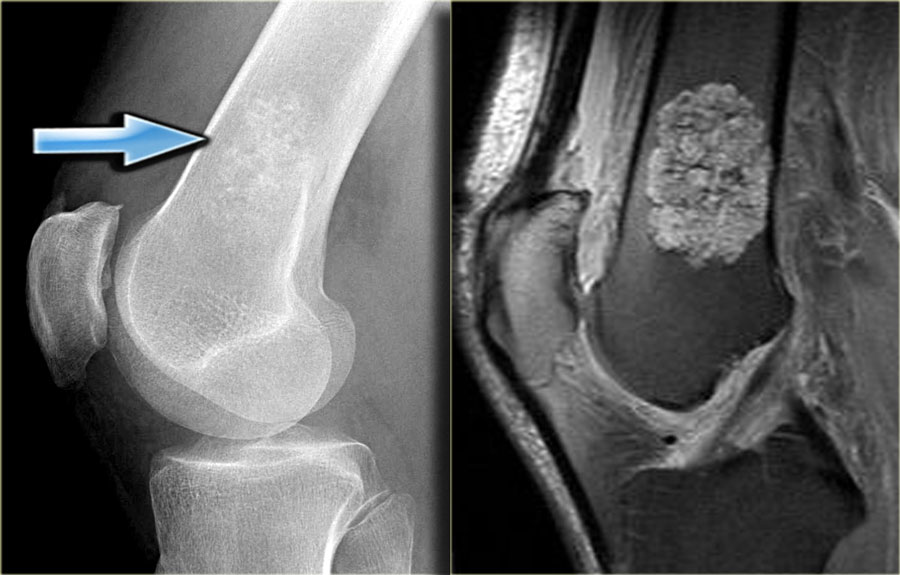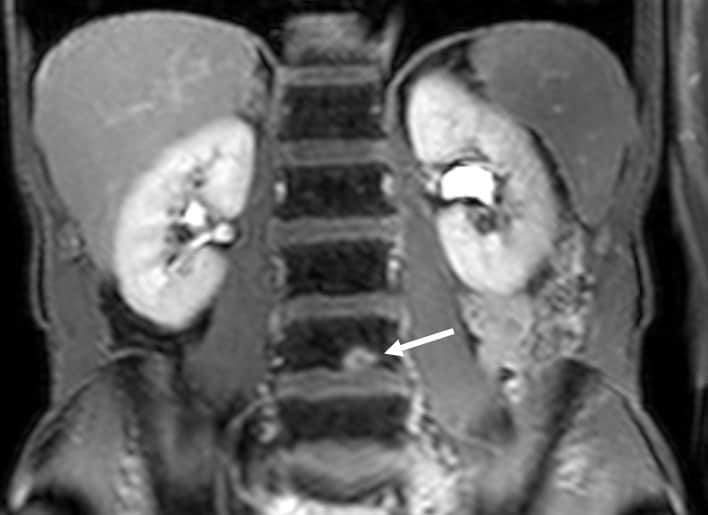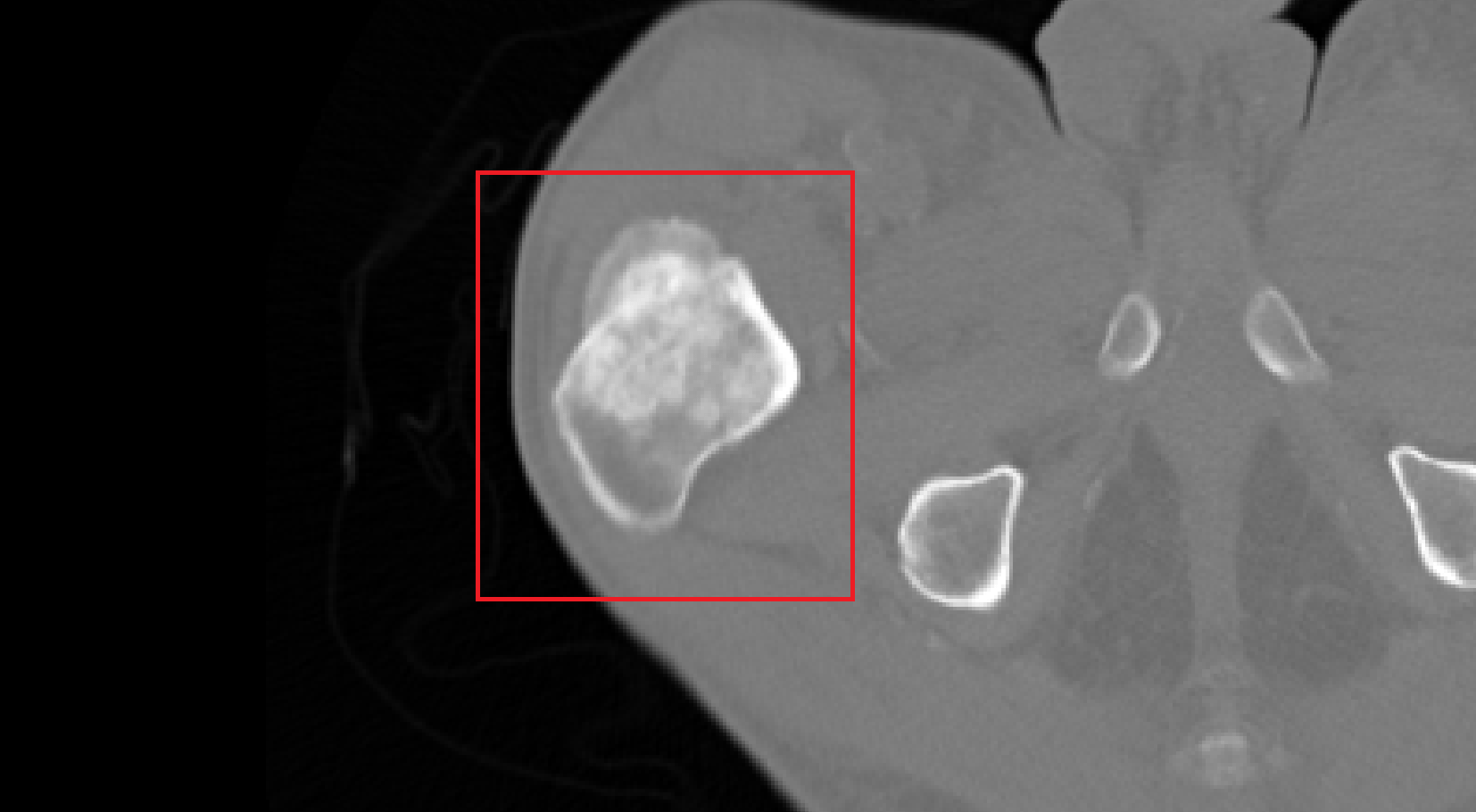MRIs are also effective in producing internal images of the body that can be used to make proper diagnoses. MRIs sees certain diseases that a CT scan cannot detect such as prostate and uterine cancer as well as some liver cancers.
 The Radiology Assistant Differential Diagnosis Of Bone Tumors
The Radiology Assistant Differential Diagnosis Of Bone Tumors
The MRI might show signs of cancer but that cancer might not be active.

Can mri detect bone cancer. In some cancers such as cervix or bladder cancer MRI is better than CT at showing how deeply the tumour has grown into body tissues. Yes an MRI can show bone cancer and is often used to detect the location and size of tumors. X-rays can often detect damage to the bones caused by cancer or new bone thats growing because of cancer.
Find out how bone cancer is tested for diagnosed and staged. They can also determine whether your symptoms are caused by something else such as a broken bone fracture. For example doctors can identify brain and spinal cord tumors using MRI.
CT scans are helpful in staging cancer. A bone scan can help spot potentially life-threatening conditions such as bone infections and cancer and treat them promptly and properly. The radiologist doctor who specializes in reading x-rays can often tell if a tumor is malignant by the way it appears on the x-ray but only a biopsy can tell for sure.
This means you wont know whether or not you need to continue treatment. If an X-ray suggests you may have bone cancer you should be referred to a specialist centre with expertise in diagnosing and treating the condition. In total MRI identified 15 patients 23 whose bone-scan and plain-radiograph results were considered negative or equivocal.
It can be particularly useful for showing whether the tissue left behind after treatment is cancer or not. MRI scans are very useful for showing up how far a bone tumour has grown inside a bone. An MRI magnetic resonance imaging may help outline a tumor in the bone and may also help determine whether cancer cells have spread to the brain or spinal cord.
For example it could be scar tissue left over from cancer killed off by your treatment. Detection and Diagnosis Finding cancer early -- while its small and before it has spread -- often allows for more treatment options. A chest x-ray is often done to see if bone cancer has spread to the lungs.
MRI studies correctly identified metastatic disease in all 41 patients including 7 whose bone scans and supplemental plain radiographs showed no evidence of metastases. Research has shown that MRIs are able to detect bone cancer better than traditional bone scans can. Preparing for your MRI scan Before you go to your appointment or when you arrive you fill in a safety checklist.
You will normally have an MRI to help diagnose bone cancer. MRI is painless and simple. Heres what you can expect.
The spread of cancer to the bone or brain show up better on an MRIan MRI can take about 30 minutes and the patient needs to lie still in order to have a very clear image. Computed tomography CT scans. Preparing for your MRI scan.
MRI creates cross-sectional images of the inside of your body using strong magnets instead of radiation found in X-ray imaging and other similar tests. MRIs have been used over bone scans to detect bone cancers because of its ability to create a detailed image of a targeted area. Sometimes the way the bone looks on an x-ray can help the doctor tell which type of bone cancer it is.
MRI for detecting bone mets Magnetic resonance imaging MRI is a non-radioactive imaging method that is quickly gaining ground as an alternative to scintigraphy. This is often true for osteosarcoma. PET scan A PET positron emission tomographyCT scan is an advanced nuclear imaging technique that combines CT scan technology with positron emission tomography into one machine.
MRI is a tool used to find and locate certain cancers. Bone x-rays may show if the cancer started in the bone primary bone cancer. A recent April 2017 published review of the professional research on MRI for the detection of bone mets in prostate cancer evaluated how well MRI compared with scintigraphy.
A bone scan is just one imaging tool used to identify bone conditions in an individual. Often a contrast dye is used to create a clearer image. After cancer treatment an MRI is unable to determine whether remaining masses are cancerous.
Or if the cancer spread to the bone from somewhere else in the body secondary bone cancer.
 State Of The Art Imaging For Diagnosis Of Metastatic Bone Disease Springerlink
State Of The Art Imaging For Diagnosis Of Metastatic Bone Disease Springerlink
 Figure 3 From Mri Of Bone Tumors Advances In Diagnosis And Treatment Assessment Semantic Scholar
Figure 3 From Mri Of Bone Tumors Advances In Diagnosis And Treatment Assessment Semantic Scholar
 The Radiology Assistant Sclerotic Tumors
The Radiology Assistant Sclerotic Tumors
Mri Of Bone Tumors Advances In Diagnosis And Treatment Assessment

 Mri Choice To Detect Bone Mets Varies By Cancer Medpage Today
Mri Choice To Detect Bone Mets Varies By Cancer Medpage Today
 Pdf Benign And Malignant Bone Tumors Radiological Diagnosis And Imaging Features Semantic Scholar
Pdf Benign And Malignant Bone Tumors Radiological Diagnosis And Imaging Features Semantic Scholar
 Whole Body Mri Gets Cancer Detection Boost Physics World
Whole Body Mri Gets Cancer Detection Boost Physics World
 Figure 1 From Mri Of Bone Tumors Advances In Diagnosis And Treatment Assessment Semantic Scholar
Figure 1 From Mri Of Bone Tumors Advances In Diagnosis And Treatment Assessment Semantic Scholar
 Ut Southwestern Develops 7 Minute Whole Body Mri To Detect Cancer Metastases To Bone Newsroom Ut Southwestern Dallas Texas
Ut Southwestern Develops 7 Minute Whole Body Mri To Detect Cancer Metastases To Bone Newsroom Ut Southwestern Dallas Texas
Mri Of Bone Tumors Advances In Diagnosis And Treatment Assessment
 Detection And Quantification Of Primary And Metastatic Bone Cancer
Detection And Quantification Of Primary And Metastatic Bone Cancer
/bone-cancer-diagnosis1-5ad8c27efa6bcc00361e3d43.png)


No comments:
Post a Comment
Note: Only a member of this blog may post a comment.